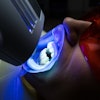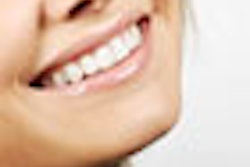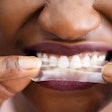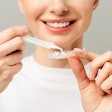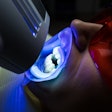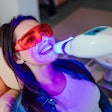Peroxide-based and nonperoxide-based in-office systems are equally effective at tooth whitening, but nonperoxide agents may affect enamel, according to a new study to be presented at the International Association for Dental Research conference next month in Barcelona, Spain.
Researchers from Cairo University wanted to evaluate tooth color change and surface topography after exposure to both systems. They looked at 20 subjects, and took visual and instrumental color measurements using the Vitapan Classical (Vident) shade guide and an intraoral colorimeter (ShadeStar, Dentsply), as well as upper arch impressions, immediately before bleaching.
Ten subjects were then treated with 25% peroxide bleaching agent (Zoom2 kit, Discus Dental) for 45 minutes over three sessions of 15 minutes each.
The other 10 subjects received a nonperoxide bleaching agent (Gentle Bright Plus, LumaLite) for 15-minute exposures of bleach, over three sessions of five minutes each.
Color measurements and upper arch impressions were retaken 48 hours after bleaching.
Among the study findings:
- Both peroxide and nonperoxide bleaching agents induced significant color change. However, no significant difference was found between treatment with the two.
- The nonperoxide bleaching agent induced alteration in the enamel surface morphology.
Although both systems were equally effective at whitening, the nonperoxide agent induced significant alteration in the enamel surface topography compared to the peroxide alternative, the authors concluded.
Copyright © 2010 DrBicuspid.com


